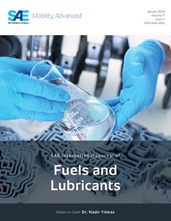The article suggests the results of experimental and theoretical studies of the engine heating system with a phase-transitional thermal accumulator when the vehicle is in motion in a driving cycle. The aim of the study is to evaluate the efficiency of the vehicle heating system within thermal accumulator and catalytic converter under operating conditions. The peculiarity of the presented system is that it uses thermal energy of exhaust gases to accumulate energy during engine operation. The article describes the methodology to evaluate vehicle fuel consumption and emission in the driving cycle according to the UNECE Regulation № 83-05. The methodology takes into account the environmental parameters, road conditions, the design parameters of the vehicle, the modes of its motion, thermal state of the engine cooling system and the catalytic converter. Experimental studies determined the patterns of changing technical parameters of the engine G4GC (4FS 7.72 / 8.45) in the heating process using the heating system with thermal accumulator. Mathematical modelling techniques enabled to obtain quantitative values of fuel consumption and emission of KIA CEE'D 2.0 5MT2 in the driving cycle.
The analysis of the research results showed that using the vehicle heating system can significantly reduce the time of heating the engine, fuel consumption and harmful emission under operating conditions.
